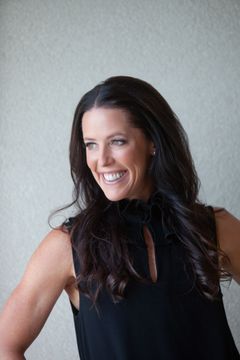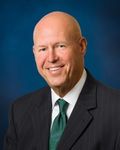Great group fitness instructors are constantly looking for ways to increase the effectiveness of classes to keep members coming back for more. While this typically includes refining exercise selection, adding new tools, tricks and toys, as well as varying the music we play, I’d like to explore three ways we can increase our effectiveness that have nothing to do with the typical top three.
The landscape of fitness, in general, is changing. With the increase of boutique studios, small-group training programming and more convenient methods of getting your sweat on (think apps and on-demand players), a group fitness instructor needs to take a look in the mirror and make sure he or she is still relevant. Let’s take a look at the three P’s of professional group fitness instructors that will help you stand out this year.
PERSONALIZE
Personalize certainly encompasses the standard protocol: learn names, greet members, talk to the newbies and offer modifications. But, what I’m suggesting goes beyond these common to-dos.
Truly personalizing the experience in your class means understanding that there are three different types of “group” participants:
1. Social participants come for the interaction. They like high fives, they’re vocal, they like team challenges or partner work, and they want credit for showing up.
2. Competitive participants need the group environment to push themselves. Some seek an instructor’s approval or public recognition, but some simply compete in silence, using the performance of others in the room to help them get the most from their workouts.
3. Agnostic participants come for accountability. They like putting workouts on their calendar, they live somewhere in the middle or back of the room and they want little attention, but they like the structure and education that comes with group classes.
Start by realizing you fall into one of these categories and your workouts and cues typically come from a place of what you need in a group class. Take stock and commit to rounding out your class to address the needs and motivation of each group. Make sure there’s time for socialization, but if someone doesn’t want to be social it won’t affect the workout. Include some competitive elements, but don’t let the push to go harder, faster and better hijack the experience for those that couldn’t care less. And, yes, we must let some people BE and call what they’re doing good enough.
Remember that your participants’ goals and motivations are unique. Your job, in a group setting, is to acknowledge, but know you can’t win them all. It is better to focus on the promise of the specific class that you’re teaching. If it’s a cardio class, give them the best cardio experience. If it’s strength, give them the best strength experience. And then educate participants about how it all comes together and the additional resources at the facility available to help each individual reach his or her goals. You don’t have to be everything to everyone—health and wellness is a team sport and it’s time all professionals in the industry realized this. You play a very important role, but it is just one part. As they say, it takes a village.
PRIORITIZE
Building on the team concept from above, to be more effective you must recognize the consumption of group fitness is a bit different now than it was 10 or 20 years ago. Not only are the class types different, and more diverse than ever, many members hold more than one membership or utilize non-traditional resources to get their group fitness fix. More than ever, group fitness connoisseurs scout the options and craft their perfect workout experiences with the class schedule at the club, other options at local boutique studios, as well as additional resources that are convenient and personalized, such as apps and on demand programs.
This shouldn’t be viewed as a negative, but as an opportunity to reprioritize your goals in class to ensure the experience the members have is exactly what they need at that very moment, and that your contribution to their fitness journey aligns with their overall needs. It’s time we become less obsessed about creating a group of regulars and coming up with ways to keep people in our classes week after week, month after month and year after year. Trust that being a part of a member’s journey is incredibly important. Empowering people to do what they need to live their most-fit lives is the best gift you can provide.
With this in mind, here is your new game plan:
1. Prioritize purposeful education.
Consistently educate participants about the goal of the class you are teaching in that very moment (endurance, strength, flexibility, stabilization, etc.) and how this singular workout fits into the grander scheme. Educate them about complementary workouts and resources for additional wellness topics such as nutrition, sleep and stress reduction. Give up the notion that you must be everything to everyone; your worth is in being the conduit for the member.
2. Prioritize positive experiences.
Beyond anything participants receive, they should leave the studio with a positive feeling which will help them stay committed to getting to a healthier place. Refer to the personalization information from above, as creating positives experiences is very different for each person that is in your class. Allow enough flexibility in your plans to be certain everyone has a chance to “get it right.” Planting opportunities for small victories throughout your class is a great way to leave everyone feeling good after any workout. For example, during the warm-up for a strength class have everyone perform 20 body-weight squats and provide one singular focus, such as keeping the chest up. Have participants partner up and give the other person a thumbs-up when they are keeping their chest up. Think of more scenarios such as this to plan throughout the workout.
3. Prioritize planned outcomes.
Provide a promise based on the description of your class and then stick to it. At the end, reframe what happened during the class and congratulate the group on the outcome. Pair this with educating on how this fits into the member’s bigger fitness journey and reflect on all the “wins” each person achieved along the way. This is the recipe for creating fans for life.
PLAN
Finally, plan, plan and plan some more. You can’t personalize if you don’t plan. And you can’t prioritize if you don’t plan. If you’re still winging it and trusting the music and entertainment value of your performance will you get you through, you will start to see your numbers dwindle. Your overall effectiveness as a group fitness instructor hinges on these three ingredients:
1. Research
Read, listen and watch anything you can get your hands on for updated ideas, techniques and tools. Utilize professional resources, including those offered by ACE, from inside and outside of the fitness industry. Get to conventions; don’t rely solely on online resources. But also keep an eye on the consumer side of things as well, if only to debunk myths and answer questions your participants might ask. Take classes, watch reality television, subscribe to the “fun” magazines that dole out fitness advice. Never stop researching.
2. Review
Review your own performance. You may not get an annual review like clockwork at a club, but you should constantly review how you’re doing. After each class, take a moment to reflect. Did your plan go well? What could you have done better? How did people react? What did you promise for next week? What do you need to research? Don’t wait for someone to tell you how to up your game—take it upon yourself to continuously push yourself to grow.
3. Reinvent
Finally, know that what made you “popular” in 1997 is not the same thing that will make you a trusted resource now. Members are different. Fitness is different. YOU are different. Respect that—honor it. You were put on this planet with a specific talent that speaks to a specific group audience. Find the intersection of your knowledge, passion and interest to keep yourself excited and engaged.
 by
by 








 by
by